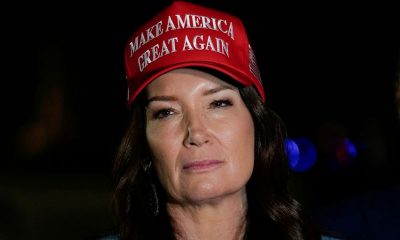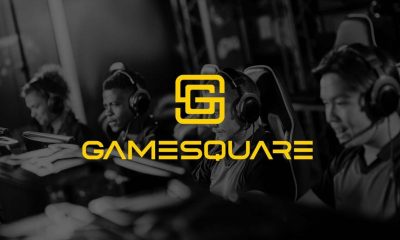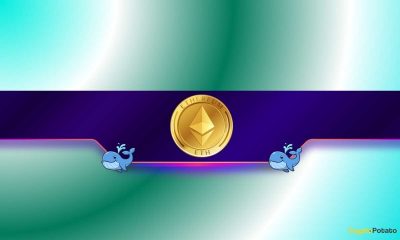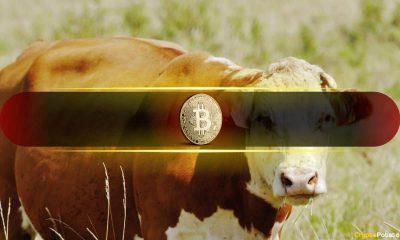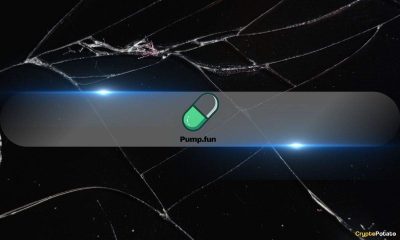Economy
Waller says recent data gives Fed space to decide next interest rate move
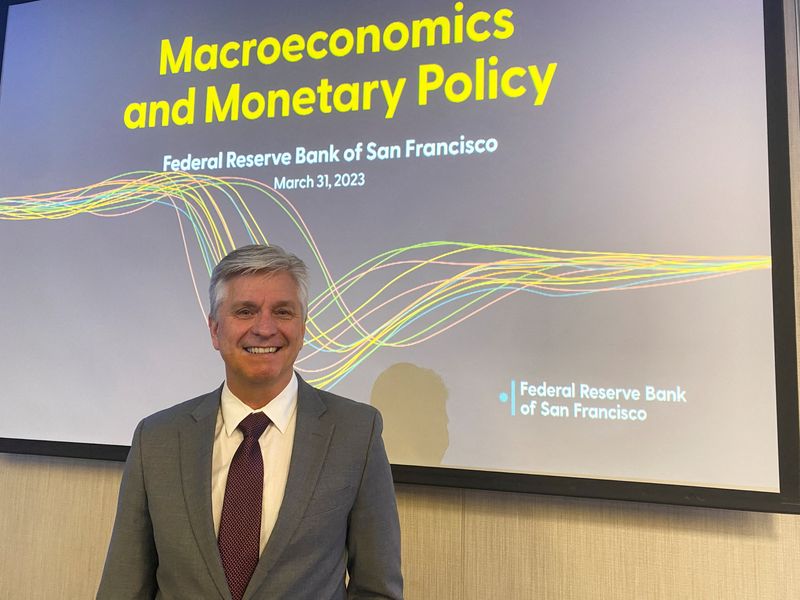
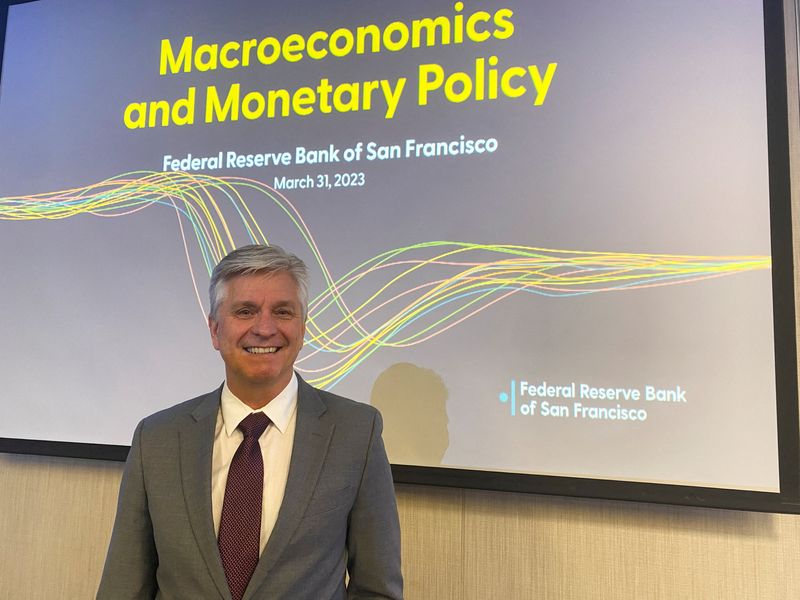
© Reuters. FILE PHOTO: Federal Reserve Board Governor Christopher Waller poses before a speech at the San Francisco Fed, in San Francisco, California, U.S., March 31, 2023. REUTERS/Ann Saphir/File Photo
By Michael S. Derby
(Reuters) -Federal Reserve Governor Christopher Waller said on Tuesday the latest round of economic data was giving the U.S. central bank space to see if it needs to raise interest rates again, while noting that he currently sees nothing that would force a move toward boosting the cost of short-term borrowing again.
Recent economic news is “going to allow us to proceed carefully,” Waller said in an interview with CNBC, adding that “there’s nothing that is saying we need to do anything imminent anytime soon, so we can just sit there, wait for the data, see if things continue” on their current trajectory.
On Friday the U.S. Labor Department reported that the economy continued to gain jobs at a solid clip in August even as the unemployment rate shot up to 3.8% from 3.5% in July. That data was released during a week where there was fresh news on inflation, as markets continue to debate the need for more monetary policy tightening to tame inflation.
In recent days Fed officials have said that while inflation is still too high, it is coming down, and they have said that any move to lift the range for the benchmark overnight interest rate depends on the data. The Fed last raised rates in late July, pushing its policy rate to the 5.25%-5.50% range. It has raised that rate from the near-zero level since March 2022.
Financial markets believe the Fed is done raising rates. Futures tied to the central bank’s policy rate show only a slight chance of a hike at the Sept. 19-20 meeting and about a 40% probability of one at the last two meetings of the year, according to CME Group’s (NASDAQ:) FedWatch Tool.
But Waller cautioned against making such an assumption, noting that the Fed has been burned before by data that appeared to show an improvement on the inflation front only to see price pressures come in stronger than expected.
Whether interest rates go up again “depends on the data. I mean, we have to wait and see if this inflation trend is continuing,” Waller said. “I want to be very careful about saying we’ve kind of done the job,” adding that he wants to see “a couple of months continuing along this trajectory before I say we’re done doing anything.”
BOND MARKET
Waller also noted that another rate rise, if needed, would not cause much damage to the labor market. While the unemployment rate has risen and there is evidence of a softer jobs market, hiring is still historically strong, “so it’s not obvious that we’re in real danger of doing a lot of damage to the job market even if we raise rates one more time,” he said.
Waller brushed off a jump in bond market yields that will lead to higher headwinds for U.S. economic growth. Instead, he saw the increase as a hand-in-hand move with Fed policy actions.
“I think the Treasury yields are probably about where they should be,” Waller said. The Fed wants higher market rates, and in terms of what’s been seen in the government bond market, “they’re not going off the charts, certainly compared to where we have the policy rate.”
Waller also said the Fed was watching the commercial real estate sector for risks amid a shift in how office workers spend their time, but he said he doesn’t see much evidence that challenges in that sector could damage the broader economy.
Economy
Russian central bank says it needs months to make sure CPI falling before rate cuts -RBC


© Reuters. Russian Central Bank Governor Elvira Nabiullina attends a news conference in Moscow, Russia June 14, 2019. REUTERS/Shamil Zhumatov/File Photo
MOSCOW (Reuters) – Russia’s central bank will need two to three months to make sure that inflation is steadily declining before taking any decision on interest rate cuts, the bank’s governor Elvira Nabiullina told RBC media on Sunday.
The central bank raised its key interest rate by 100 basis points to 16% earlier in December, hiking for the fifth consecutive meeting in response to stubborn inflation, and suggested that its tightening cycle was nearly over.
Nabiullina said it was not yet clear when exactly the regulator would start cutting rates, however.
“We really need to make sure that inflation is steadily decreasing, that these are not one-off factors that can affect the rate of price growth in a particular month,” she said.
Nabiullina said the bank was taking into account a wide range of indicators but primarily those that “characterize the stability of inflation”.
“This will take two or three months or more – it depends on how much the wide range of indicators that characterize sustainable inflation declines,” she said.
The bank will next convene to set its benchmark rate on Feb. 16.
The governor also said the bank should have started monetary policy tightening earlier than in July, when it embarked on the rate-hiking cycle.
Economy
China identifies second set of projects in $140 billion spending plan


© Reuters. FILE PHOTO: Workers walk past an under-construction area with completed office towers in the background, in Shenzhen’s Qianhai new district, Guangdong province, China August 25, 2023. REUTERS/David Kirton/File Photo
SHANGHAI (Reuters) – China’s top planning body said on Saturday it had identified a second batch of public investment projects, including flood control and disaster relief programmes, under a bond issuance and investment plan announced in October to boost the economy.
With the latest tranche, China has now earmarked more than 800 billion yuan of its 1 trillion yuan ($140 billion) in additional government bond issuance in the fourth quarter, as it focuses on fiscal steps to shore up the flagging economy.
The National Development and Reform Commission (NDRC) said in a statement on Saturday it had identified 9,600 projects with planned investment of more than 560 billion yuan.
China’s economy, the world’s second largest, is struggling to regain its footing post-COVID-19 as policymakers grapple with tepid consumer demand, weak exports, falling foreign investment and a deepening real estate crisis.
The 1 trillion yuan in additional bond issuance will widen China’s 2023 budget deficit ratio to around 3.8 percent from 3 percent, the state-run Xinhua news agency has said.
“Construction of the projects will improve China’s flood control system, emergency response mechanism and disaster relief capabilities, and better protect people’s lives and property, so it is very significant,” the NDRC said.
The agency said it will coordinate with other government bodies to make sure that funds are allocated speedily for investment and that high standards of quality are maintained in project construction.
($1 = 7.1315 renminbi)
Economy
Russian central bank says it needs months to make sure CPI falling before rate cuts -RBC


© Reuters. Russian Central Bank Governor Elvira Nabiullina attends a news conference in Moscow, Russia June 14, 2019. REUTERS/Shamil Zhumatov/File Photo
MOSCOW (Reuters) – Russia’s central bank will need two to three months to make sure that inflation is steadily declining before taking any decision on interest rate cuts, the bank’s governor Elvira Nabiullina told RBC media on Sunday.
The central bank raised its key interest rate by 100 basis points to 16% earlier in December, hiking for the fifth consecutive meeting in response to stubborn inflation, and suggested that its tightening cycle was nearly over.
Nabiullina said it was not yet clear when exactly the regulator would start cutting rates, however.
“We really need to make sure that inflation is steadily decreasing, that these are not one-off factors that can affect the rate of price growth in a particular month,” she said.
Nabiullina said the bank was taking into account a wide range of indicators but primarily those that “characterize the stability of inflation”.
“This will take two or three months or more – it depends on how much the wide range of indicators that characterize sustainable inflation declines,” she said.
The bank will next convene to set its benchmark rate on Feb. 16.
The governor also said the bank should have started monetary policy tightening earlier than in July, when it embarked on the rate-hiking cycle.

 Forex3 years ago
Forex3 years agoForex Today: the dollar is gaining strength amid gloomy sentiment at the start of the Fed’s week

 Forex3 years ago
Forex3 years agoUnbiased review of Pocket Option broker

 Forex3 years ago
Forex3 years agoDollar to pound sterling exchange rate today: Pound plummeted to its lowest since 1985

 Forex3 years ago
Forex3 years agoHow is the Australian dollar doing today?

 Cryptocurrency3 years ago
Cryptocurrency3 years agoWhat happened in the crypto market – current events today

 World3 years ago
World3 years agoWhy are modern video games an art form?

 Commodities3 years ago
Commodities3 years agoCopper continues to fall in price on expectations of lower demand in China

 Economy3 years ago
Economy3 years agoCrude oil tankers double in price due to EU anti-Russian sanctions

